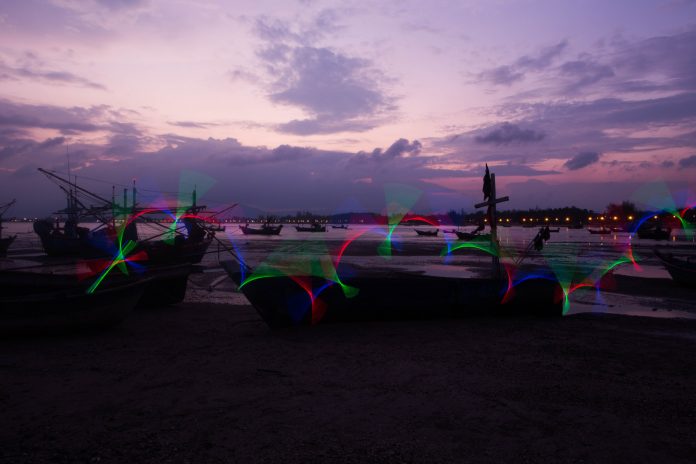A new study highlights the benefits of LED-illuminated fishing nets, which reduce the bycatch of sharks and skates while still sustaining catch rates of target species – as well as protecting others
Commercial fisheries and marine wildlife conservation can work together as researchers find that using lighted nets greatly reduces accidental bycatch of sharks, rays, sea turtles, and unwanted finfish.
Lighted gillnets reduced total bycatch by 63%, including a 95% reduction in sharks, skates, and rays, with an additional 81% reduction in Humboldt squid, and a 48% reduction in unwanted finfish – all while maintaining catch rates and market value of target fish.
Technical solutions to reduce bycatch
As one of the most extensively used fishing gear in coastal regions globally, gillnets often catch other animals not targeted by fishing boats – including endangered, threatened, and protected species such as sharks, sea turtles, marine mammals, and seabirds.
They also accidentally catch other fish species like non-marketable juvenile target fish species, and often are caught dead, injured, and dumped overboard. This incidental capture of non-target species, or “bycatch”, results in a large over-fishing crisis which threatens oceans and ecosystems.
Illuminating gillnets with LED lights have been effective tool to reduce bycatch of endangered sea turtles in coastal gillnet fisheries, but only recently, in the last decade. However, the effects of net illumination on other vulnerable species, total fisheries bycatch, and efficiency of fishery operations have never before been examined.
To examine this, researchers attached green LED lights every 10 meters on gillnets along the Pacific coast of Mexico and found that the lighted nets almost eliminated bycatch of sharks, skates, and rays which have been declining globally, due to bycatch and illegal fishing.
Additionally, reducing the time it takes fishermen to disentangle nets by 57%, illuminated nets are an attractive technology in the industry, which can increase efficiency independently of any concern for bycatch.
The study began with the need for fishers to remove fewer entangled animals in the illuminated nets, which means that fishers can save more than an hour per trip when fishing with illuminated nets, also improving the quality of their catch.
Making fishing more efficient and safer for threatened species
Jesse Senko of Arizona State University, and lead author of the study, said: “These results demonstrate that the potential benefits of illuminated nets extend well beyond sea turtles, while demonstrating the strong promise for net illumination to mitigate discarded bycatch in similar coastal gillnet fisheries throughout the world’s oceans.”
Hoyt Peckham, a co-author on the study and Director of Small-scale Fisheries at the Wildlife Conservation Society, added: “Gillnets are ubiquitous because they are inexpensive and catch everything that passes them. This work is exciting because it provides a practical solution increasing gillnets’ selectivity and avoiding their bycatch. Emerging technologies should help us incorporate this kind of lighting into gillnet materials so that adopting this solution will become a no-brainer for fishers.”
“It is important for fishers to know that there are tangible benefits for them”
John Wang, a co-author on the study and Fisheries Ecologist at NOAA Fisheries’ Pacific Islands Fisheries Science Centre in Honolulu, concluded: “Making life easier for fishers by reducing the amount of time untangling bycatch is equally essential as reducing the bycatch biomass in nets. It is important for fishers to know that there are tangible benefits for them. This is critical for the adoption of such technologies by the fishing industry.”
The Wildlife Conservation Society works in many costal nations to reduce the bycatch of megafauna in gillnet fisheries, such as dolphins, sharks, and rays. Until now there has been limited technical solutions which could reduce bycatch, while allowing continued catches of the species the fishers set out to catch, and often those catches have key livelihood and food security implications.
Therefore, this research delivers a possible solution to safeguarding threatened species, which will be further explored as part of WCS’s global marine conservation efforts.











